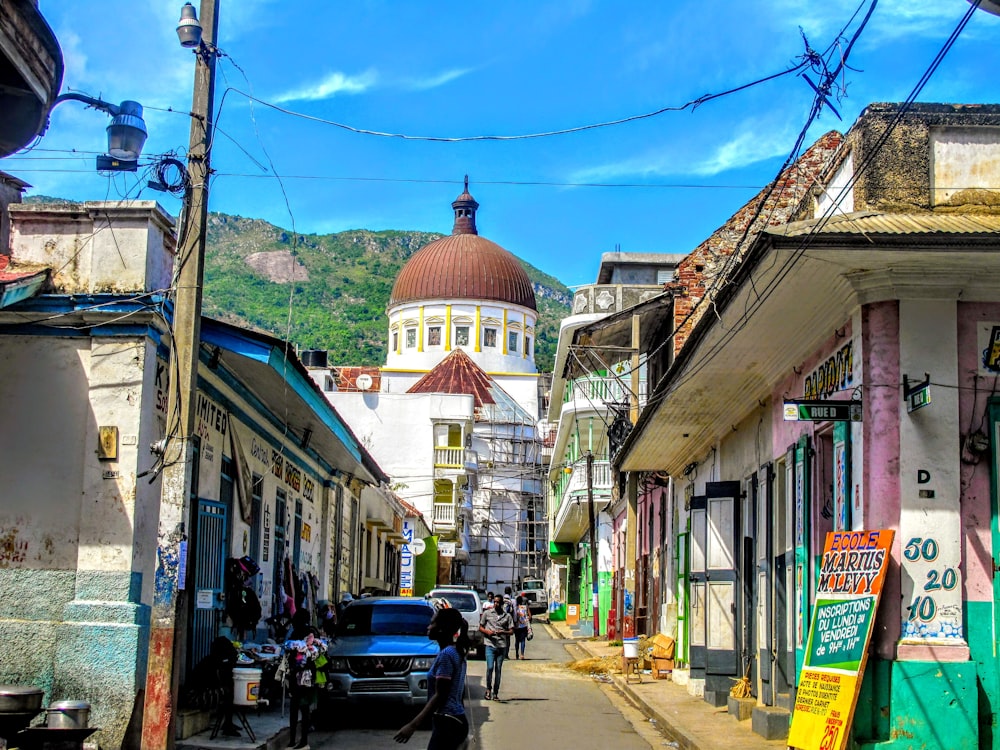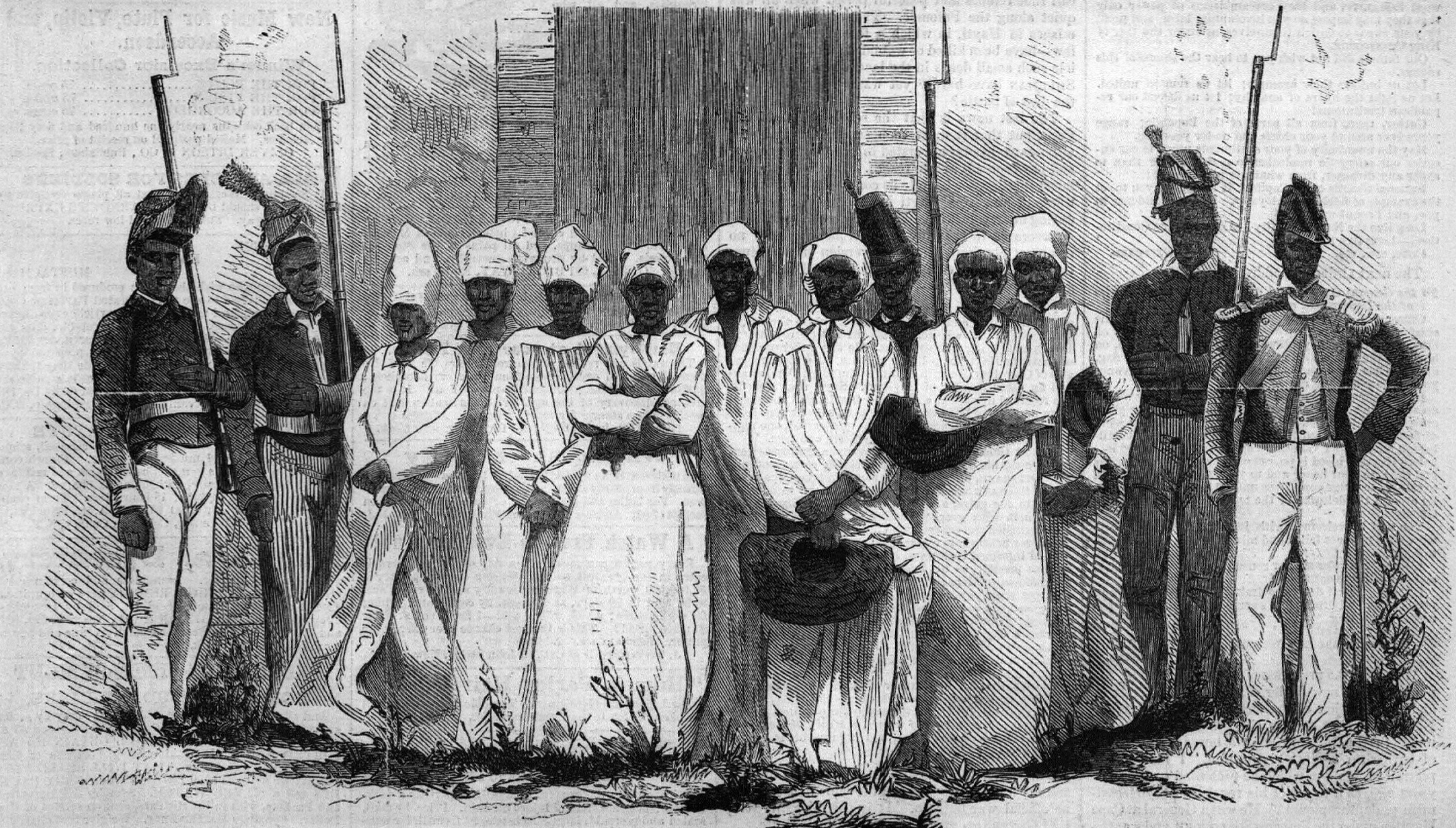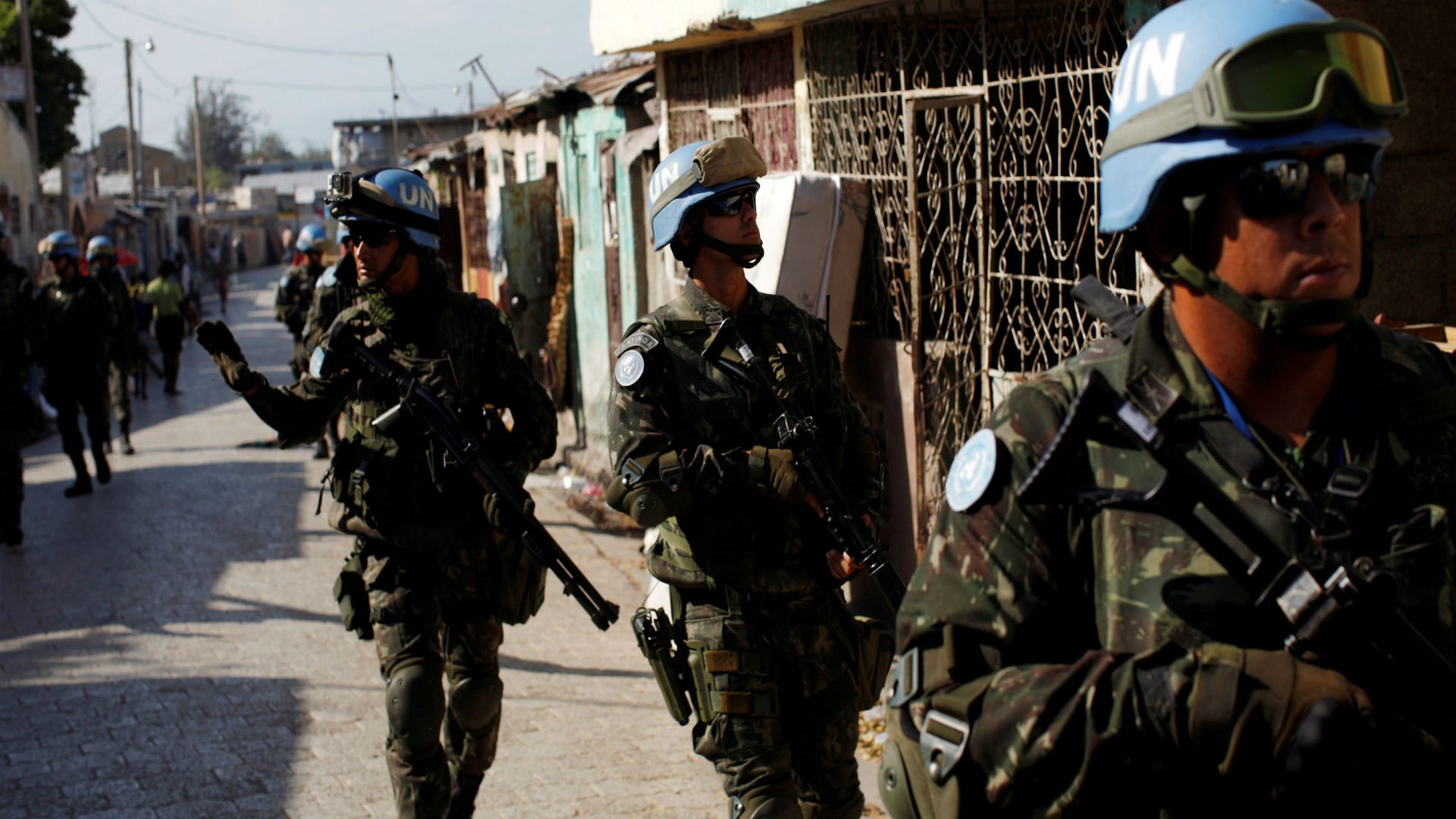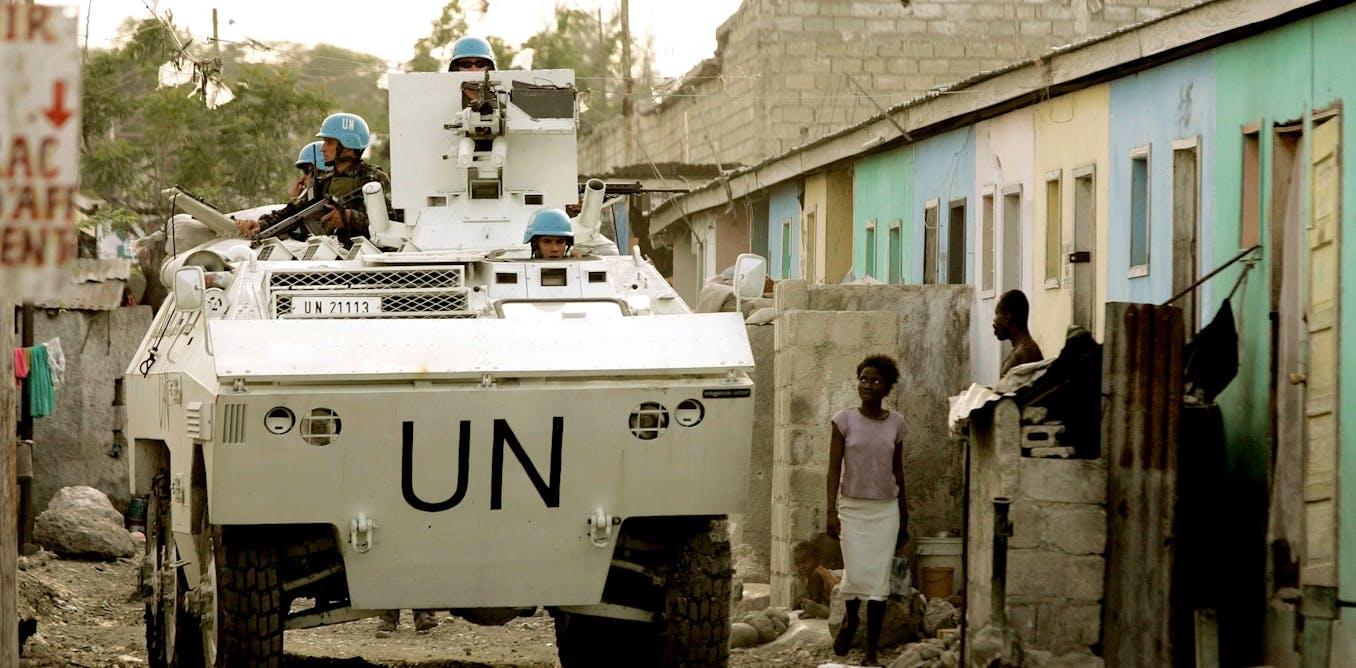Haiti has troubled and bewitched me.
Its stygian complexity, bottomless poverty, unchanging corruption, gorgeous graphic arts, nocturnal drumming and insoluble challenges became a chord which ran through my diplomatic and international careers.
My first visit was in 1960 to a country in the grip of Papa Doc Duvalier and his Tonton Macoutes (secret police).
The last was in 2010 when I visited shortly after a catastrophic earthquake, leading a small team on behalf of Jimmy Carter’s ‘Friends of the Inter-American Democratic Charter’.

The country has been in the news with a sequence of disasters: an earthquake in the Southwest corner, followed by a tropical storm, the assassination of the president, the increasingly blatant eruption of criminal gangs and the kidnapping of sixteen Americans and one Canadian whose release (to avoid execution) was priced at one million US dollars each – incidentally promoting Haiti to ‘World Kidnapping Capital’.
The disasters, both human and natural, are not exceptional: they have become the norm in this, the poorest and most tragic country of our hemisphere.
By any standard, Haiti is a failed state – top or bottom of every hemispheric index of social and health conditions – whichever denotes worst.
It has the second highest record for coup d’etats in the hemisphere.
Poverty, malnutrition and violence breed a grim family of horrors in any setting – not least for children, and Haiti is no exception: exploitation, stunted growth, mental illness, insecurity, violence, including sexual abuse, inadequate or non-existent access to clean water, education and health care.
Has it always been like this?

Surviving records indicate that conditions for the indigenous Taino people had been relatively peaceful until the arrival of Columbus and Spanish colonizers.
The Taino were enslaved and soon wiped out by harsh working conditions and disease, whereupon they were replaced by sturdier slaves imported from Africa.
Commercially, the new work force was a stunning success.
For the French colonizers who seized the Western half of the Island of Hispaniola in 1697, Haiti became a bonanza.
By the 1750’s with the returns on timber, sugar, cotton, cacao and indigo the value of Haitian exports exceeded that of the combined exports of the thirteen British colonies on the eastern seaboard of North America.
Haiti had become “the Pearl of the Antilles”.
Exploitation of the slaves was the undoing of the French, the end of the bonanza, and a resounding humiliation for Napoleon.

Slaves not only worked the fields, but were educated to take on administrative functions within the colony.
Toussaint Louverture and other literate slaves with leadership skills led a revolt, which after five years of vicious carnage, abetted by tropical disease, crushed the French army and led to independence.
This was the first successful, major slave revolt since Sparticus 1900 years before.
Haitians have little to cheer about these days, but can look with pride at the courage and skill of their predecessors’ achievement of nationhood over a once invincible European power.
By supplying much needed munitions, Haiti played a key role in Bolivar’s defeat of Spain in Venezuela.
How could things go so wrong?
Twelve years of war had devastated a prosperous infrastructure.

Sugar and its related industries along with the country’s docks, mills and warehouses had been destroyed.
Primary forests disappeared as the timber was taken for the French navy with the result that every tropical storm washes more soil into the sea.
The price of victory was ruinous.
To gain recognition Haiti was forced to pay crippling reparations to the French – payments that continued until 1947. Still in the slavery business, the Americans were not enthusiastic about the world’s first free black republic at their doorstep.
Thomas Jefferson, a slave owner himself, imposed a commercial boycott on Haiti and diplomatic recognition by the United States was delayed 60 years.
These were major impediments to development from which the country has never recovered – and Voudoo, a colourful but fatalistic theology, has not helped.
The country deserves a better hand than it has been dealt.
In the course of my visit eleven years ago, I talked to political leaders and to senior officers of MINUSTAH, the large UN team that was charged with imposing a foreign administered system of governance and order in a chaotic, gang infested vacuum and with preparing for a ‘free’ election.

In 2004 the United Nations Security Council “deemed” that the crisis in Haiti was “a threat to international peace and security.”
Order was the task of a UN military unit under a Brazilian general and a police unit under an RCMP superintendant.
Election results were widely contested and I wrote at the time that it was “highly probable that all major parties engaged in some degree of fraud.”
When a winner was finally declared it was Martelly, a charismatic rap singer – also known to drop his trousers at the end of a concert and moon the audience.
Martelly was backed by followers with the proven capacity to close down the country.
Port-au-Prince must be the most “barricadeable” city on Earth.
With few exceptions the streets are narrow and strewn with rubble.
Add a tire, light it, and if handy, throw in the carcass of an old car and presto, you have stopped all traffic save a few enterprising motorcycles.
I tell the story of MINUSTAH because at the time it seemed to offer a route out of chaos even as it appropriated a portion of national sovereignty. Tragically, its promise was never realized.

Nepalese UN soldiers infected the country with cholera.
Thousands died and a potential ‘way out’ was undermined.
Absorbing with difficulty the challenges faced by the UN and Haiti’s friends, I interviewed the astute, well-connected correspondent of Le Monde who had spent 30 years in the region, mostly in Haiti.
Asked if there was a way out, he replied “pas de sortie”.
Eleven years on and so far he is proven right.
Before Nepalese soldiers and cholera destroyed MINUSTAH and further poisoned the long, dismal reputation of International meddling in Haiti, MINUSTAH had been essentially on the right track. Should that model be revisited and revised?
Burned by the cholera disaster, the UN (apart from humanitarian support) shows little interest.
Nor is there any sign that the OAS is looking for a plan.
MINUSTAH provides an excuse for dodging the challenge, but not a responsible justification.
Even if a new and practical plan is assembled, nothing constructive can agencies provide humanitarian aid, but sadly in present Haitian circumstances this aid is essentially palliative.

Progress on the deepening problems of violence, abject poverty, be accomplished until the criminal gangs are suppressed.
Many countries and international corruption and malnutrition is not possible while the gangs have free reign across the country – in short, more despair and suffering.
All of which brings us back to square one and to the MINUSTAH model.
Dealing with the gangs is a prerequisite – a task that would have to be performed by a well-led, well-disciplined body of troops operating under the recognized authority of an international body.
The obvious candidate is the UN Security Council. Just as obviously, in the present demented international climate a plan of this nature could be vetoed by one or more permanent members of the Security Council.
Are there other options? Could the provisions of Chapter IV of the Inter-American Democratic Charter(IADC) be invoked? In theory, yes.
The Haitian government – even an interim Haitian government- or any member state of the OAS, or the Secretary General could request the immediate convocation of the Permanent Council to consider and, if agreed by a two thirds majority, to prescribe appropriate action.
In practice, the OAS would probably steer clear, maintaining they have neither the experience nor any specific Charter-based authority to apply armed force.
Moreover, the record of resort to the IADC over the past 20 years shows mixed results.
It may be argued that the absence of precedent and of a hospitable international instrument lets us all off the hook – perhaps hoping that eventually one of the gangsters will be reincarnated as Robin Hood.

This is the path of deepening horror.
For the hemisphere to close its eyes is cruel and shameful. It should be unacceptable. Imaginative planning with motivated participants, both Haitian and more widely hemispheric is urgently required. Included in this process should be the UN, the OAS, PAHO, CARICOM, Haiti’s friends, neighbours (Dominican Republic) and benefactors, including the Bretton Woods institutions.
As a starting point, two or three of the previous administrators of MINUSTAH together with an equal number of eminent and mutually compatible Haitians should be convened (ideally by the UN) to design a plan for consideration and action.

John W. Graham was the first head of the Unit for Promotion of Democracy in the Organization of American States (OAS) and in that capacity led a number of OAS election observer missions in Latin America, participated in OAS mediation in Guatemala and was the principal international mediator in the Dominican Republic post-election crisis of 1994.
He has been engaged in over thirty election observations around the world and his assignments with in the Canadian Foreign Service include: Ciudad Trujillo /Santo Domingo; Havana; High Commissioner to Guyana; non-resident Ambassador to Surinam; Minister at the Canadian High Commission in the UK, Director General, Caribbean and Central America, Ambassador to Venezuela and non-resident Ambassador to the Dominican Republic.
He was chair of the Canadian Foundation for the Americas and a member of President Carter’s Friends of the Inter-American Democratic Charter.
He has published three books, including a memoir, Whose Man in Havana: Adventures on the Far Side of Diplomacy.’ He attended Queen’s University in Kingston, Ontario, and Cambridge University in the United Kingdom.
The views and opinions expressed here are those of the author and do not necessarily reflect the official policy or position of CEIM. Any content provided by our bloggers or authors are of their opinion. The content on this site does not constitute endorsement of any political affiliation and does not reflect opinions from members of the staff and board







